If you told anybody about a decade ago that Hyundai would be making some of the most attractive cars currently on the market, they'd point and heartily laugh at such an absurd idea. They wouldn't be entirely wrong either, as Hyundai's design language around 2014 was a little too generic and commuter-y.
Related: Envisioning Lincoln Red Label: Why Lincoln should take on Cadillac's V lineup
Hyundai developed a new design direction in 2018
That all took a turn for the better around 2018 when they embraced what they call their "Sensuous Sportiness" design philosophy. To spare you the design lingo, their new lineup features a blend of sharp sporty lines, elegant and futuristic design, and an emphasis on proportions.
Hyundai also mentioned their desire to offer different designs for different models in their lineup rather than focus on a consistent look that people associate with their brand. Think BMW's kidney grilles or Bugatti's oval grille.
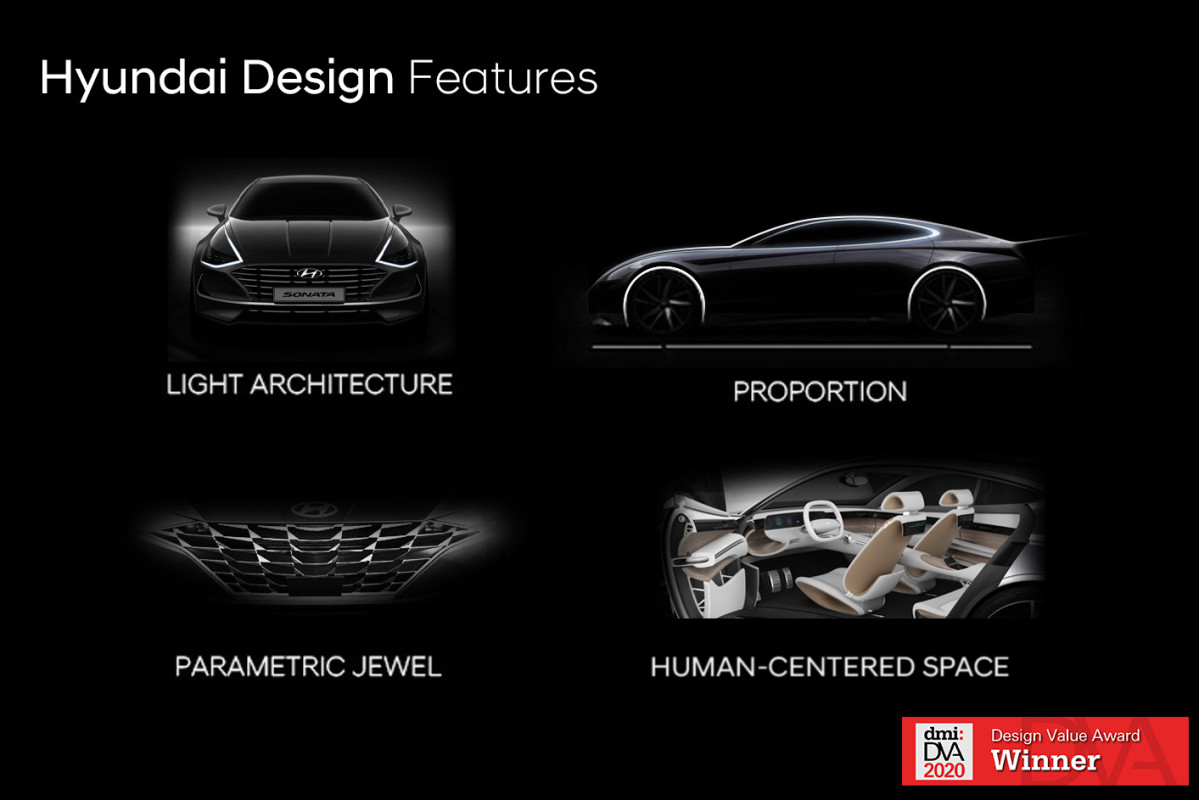 Hyundai's ‘Sensuous Sportiness’ Design
Hyundai's ‘Sensuous Sportiness’ DesignHyundai
Two key acquisitions completely transformed Hyundai's lineup
Around 2015, Hyundai poached Volkswagen Group's head of design Luc Donckerwolke. He was initially appointed as head of design for Genesis and worked alongside Hyundai's chief designer Peter Schreyer. He was joined by SangYup Lee, the exterior design mastermind who worked alongside him at Bentley.
In 2017, Donckerwolke replaced Schreyer and became Chief Design Officer of Hyundai Motor Group until resigning in April 2020. He returned to Hyundai and Genesis as Chief Creative Officer in November 2020 before becoming President of the Hyundai Motor Group in November 2022 while still retaining the position of CCO.
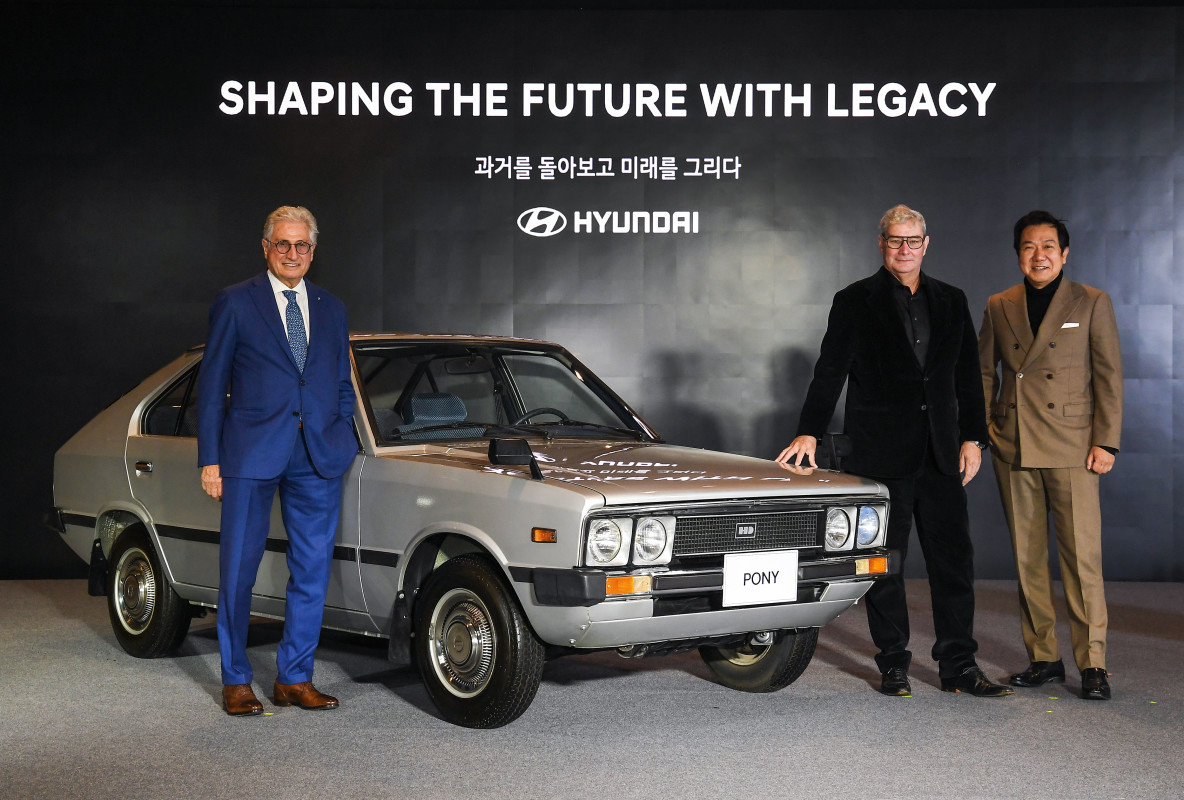 Giorgetto Giugiaro (Left), Luc Donckerwolke (Center), SangYup Lee (Right) at Design Talk 2022
Giorgetto Giugiaro (Left), Luc Donckerwolke (Center), SangYup Lee (Right) at Design Talk 2022Hyundai
Lee himself was named the head of the Hyundai Global Design Center in 2018 and later promoted to Executive Vice President of Design in December 2021.
Armed with more design freedom than they had at their previous employers, the duo expanded beyond traditional designs to reposition the Korean brand in the automotive market.
Hyundai's new design elements are immediately noticeable
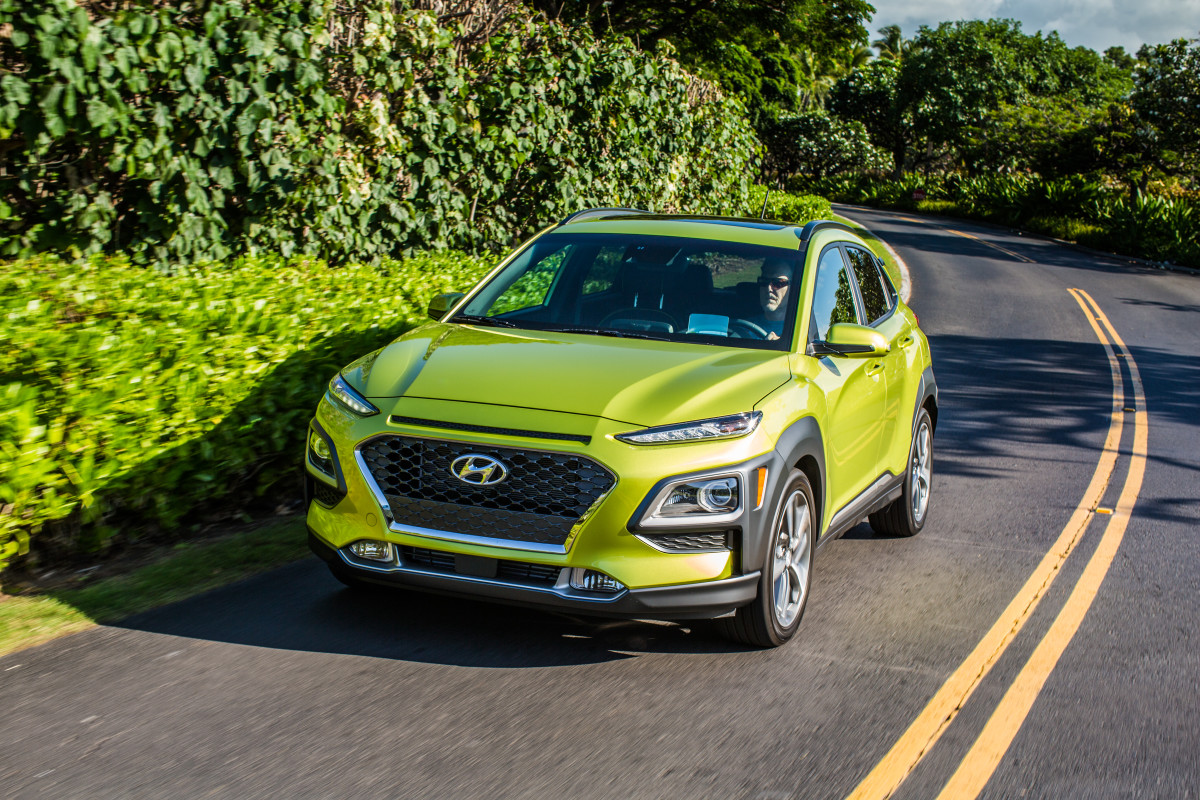 2018 Hyundai Kona
2018 Hyundai KonaHyundai
The new design elements started appearing on the 2017 Hyundai Kona with its thin headlights, grille, and sharp angles throughout. The 2018 Hyundai Santa Fe adopted similar design cues but it wasn't until the 2019 Hyundai Sonata that it became more prominent.
Despite being a sedan, the eight-generation Sonata seemed more like a fastback with an elongated, sloping rear end. The driving lights ran all the up the hood, extending from the C-shaped headlights while the taillights were united with a thin heckblende. There are sharp creases and lines throughout the car, lending it a sportier new look.
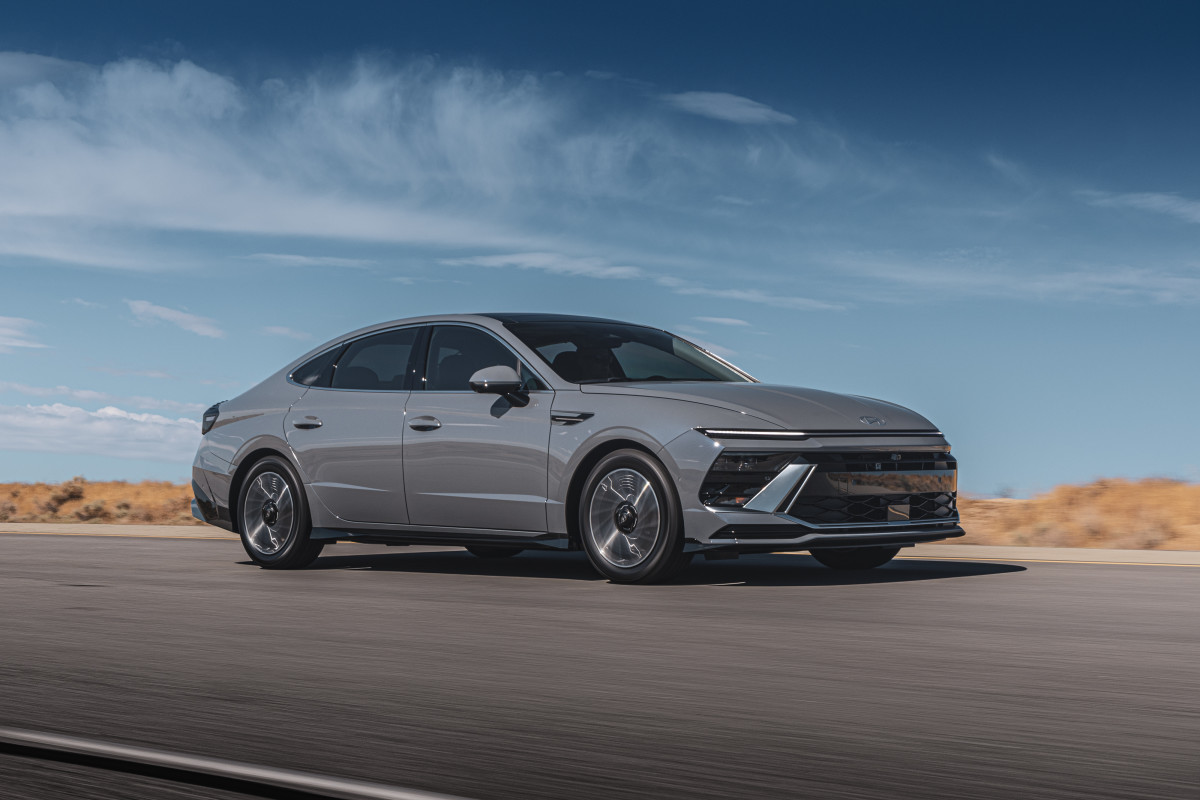 2024 Hyundai Sonata HEV Limited
2024 Hyundai Sonata HEV LimitedHyundai
The 2023 Sonata facelift takes a different approach to the design language but still keeps things relatively the same. The taillights and overall body shape are the same, although the taillights get a larger heckblende, but the taillights are now one thin strip running across the width of the front end with more lights below them at either corner.
Related: Toyota’s 4Runner TRD Surf Concept takes SEMA to the beach
The Ioniq 5 and Ioniq 6 are where the Korean brand truly began to shine
The 2021 Hyundai Ioniq 5 and Ioniq 6 are undoubtedly the stars of the show.
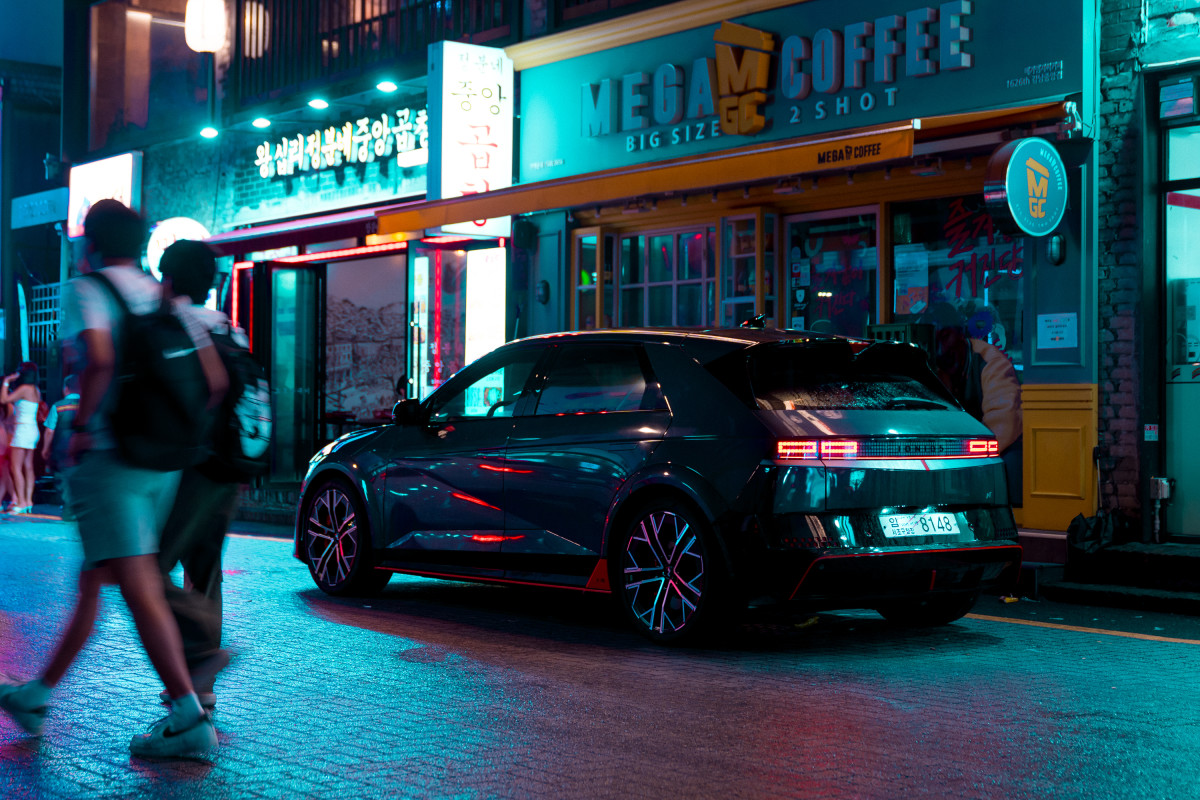 2024 Hyundai Ioniq 5 N
2024 Hyundai Ioniq 5 NHyundai
The 5 is almost peak futuristic Hyundai, with its now iconic Parametric Pixel design on the headlights, tail lights, and wheels. The sharp angles and creases make a welcome return and lend an 80s retro-futuristic look to the whole car. Things get even more angular with the Ioniq 5 N and its fantastic powder blue paint job with orange accents.
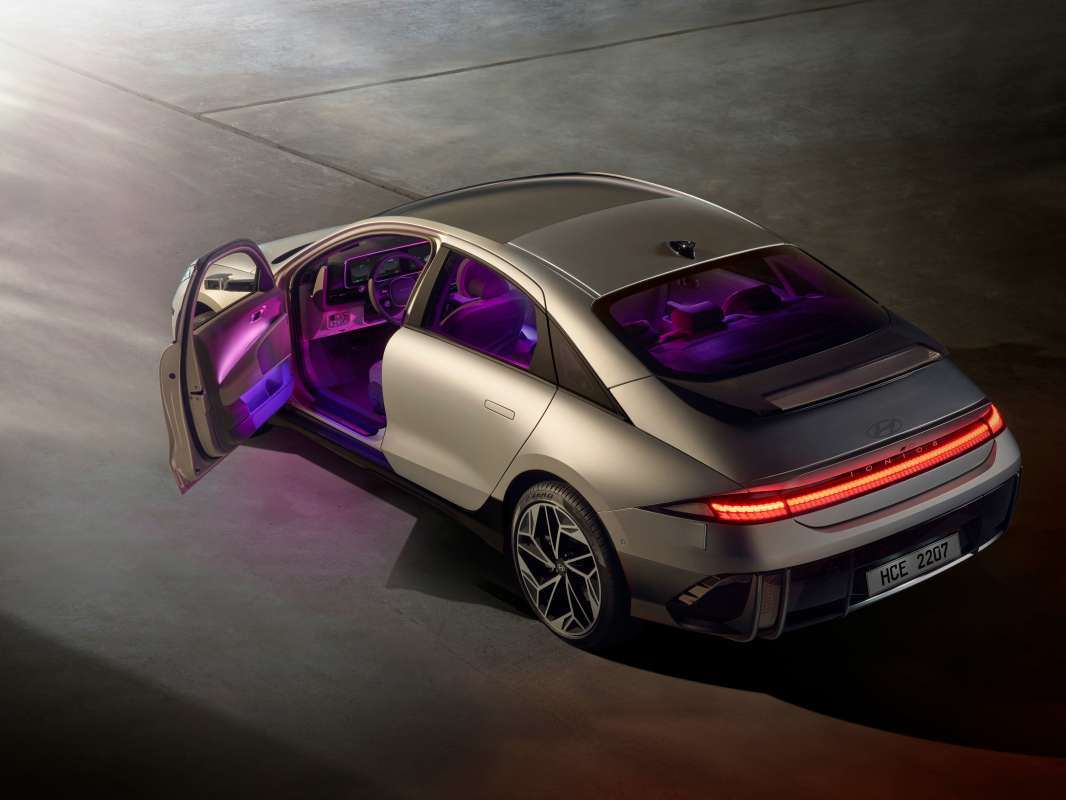 2025 Hyundai Ioniq 6
2025 Hyundai Ioniq 6Hyundai
The Ioniq 6 asks and answers its own question: what if Porsche created a Korean sedan? The C-shaped headlights of the Sonata return, albeit no longer extending up the hood. That fastback rear-end is amplified to almost 911 levels and is accented by two spoilers and heckblende Parametric Pixel taillights.
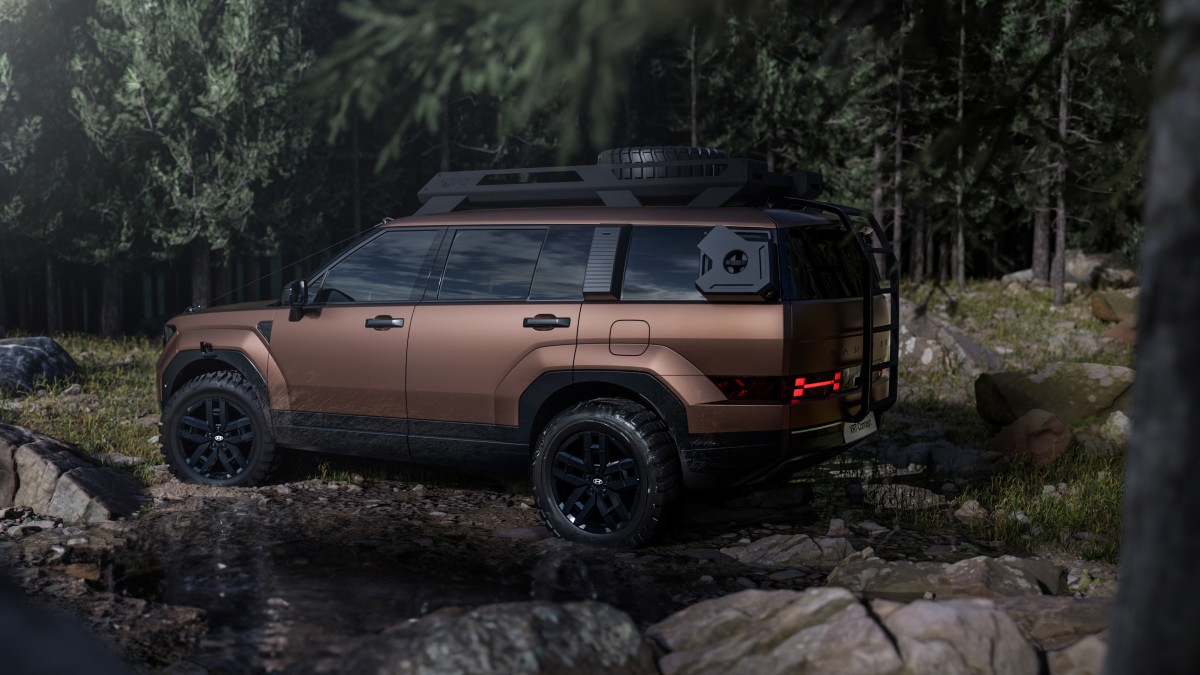 2024 Hyundai Santa Fe
2024 Hyundai Santa FeHyundai
Related: EV apocalypse: Which brands might not survive the electric revolution?
Hyundai's SUVs went under the knife as well
The 2023 Hyundai Santa Fe brought "Sensuous Sportiness" to the SUV department too. Besides the wraparound greenhouse and sharp bodylines, the headlights and taillights are a point of contention. Both feature an internal "H" shape, with the taillights sitting noticeably lower on the rear compared to other cars. The overall dimensions and shapes give the SUV a beefy yet futuristic look without going overboard like some modern EV SUVs.
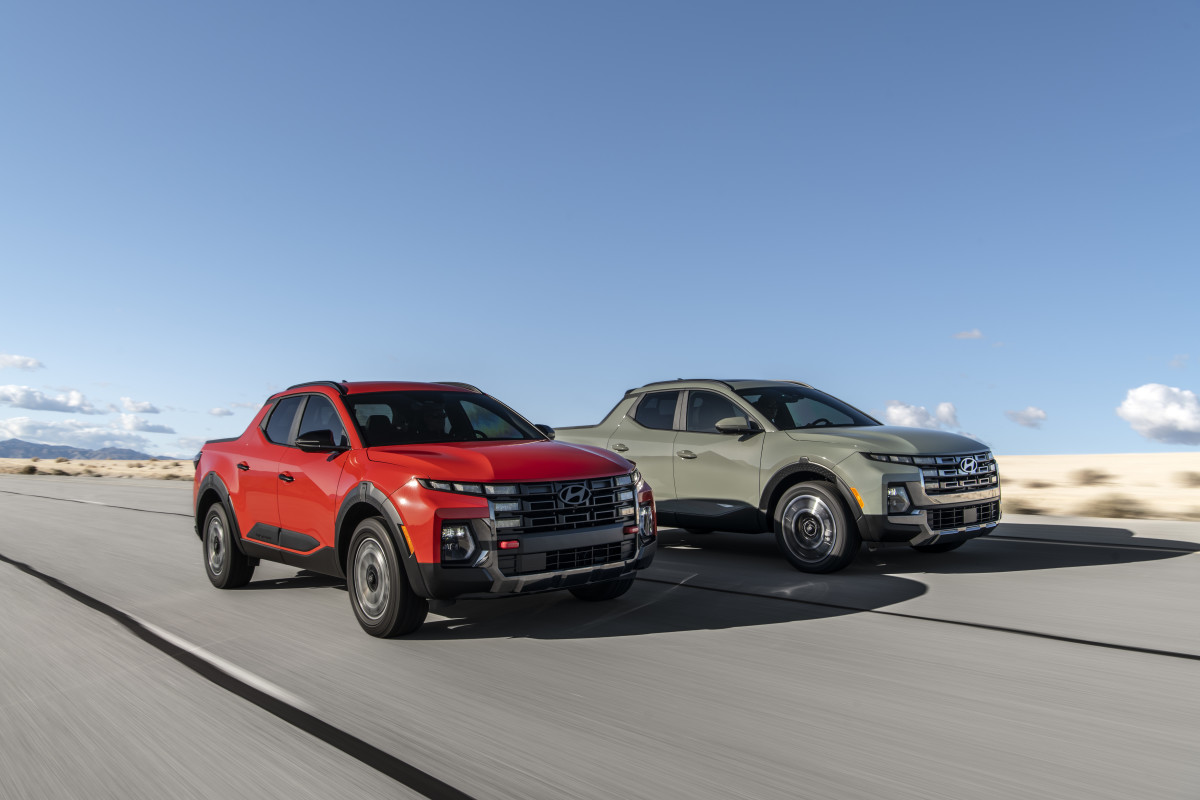 2025 Hyundai Santa Cruz
2025 Hyundai Santa CruzHyundai
North America even gets the first Korean-made pickup truck
Hyundai even dabbled in the pickup truck market with the Tucson-based Santa Cruz. Apart from being the company's first pickup truck in North America, the front-end treatment is dominated by blade-like grilles with integrated lights. The body is overall more rounded than the other models in the lineup although the creases remain present.
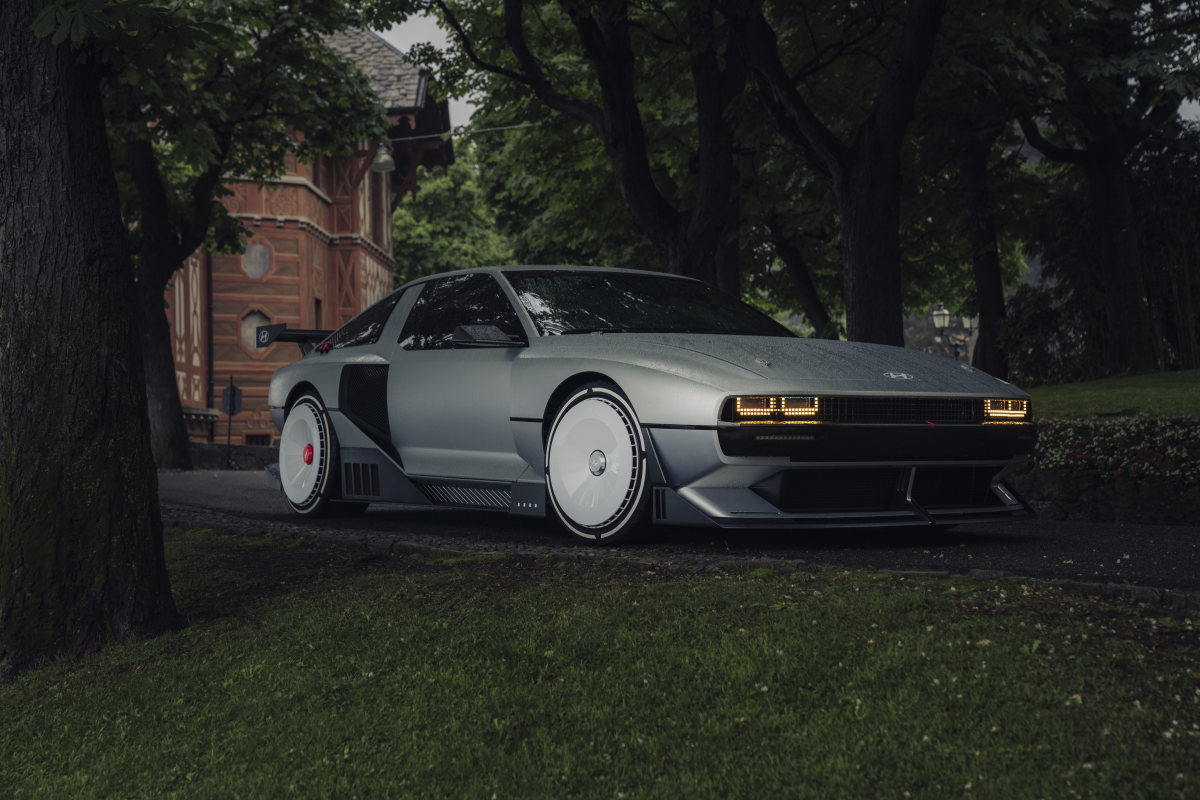 Hyundai N Vision 74
Hyundai N Vision 74Hyundai
Hyundai’s N Vision 74 is a Retro-Futuristic Hatchback straight out of Cyberpunk
Every design element integrated into Hyundai's models thus far culminates in the N Vision 74., This low-slung, retro-futuristic hatchback is straight out of Cyberpunk 2077, no question about it. The square pixel lights make a welcome return above a front splitter and rear diffuser, with widebody flares both front and back that house wheels reminiscent of BBS Turbofans.
The piece de resistance here is the park-bench-style spoiler on the rear, perfectly completing the sporty look in striking fashion.
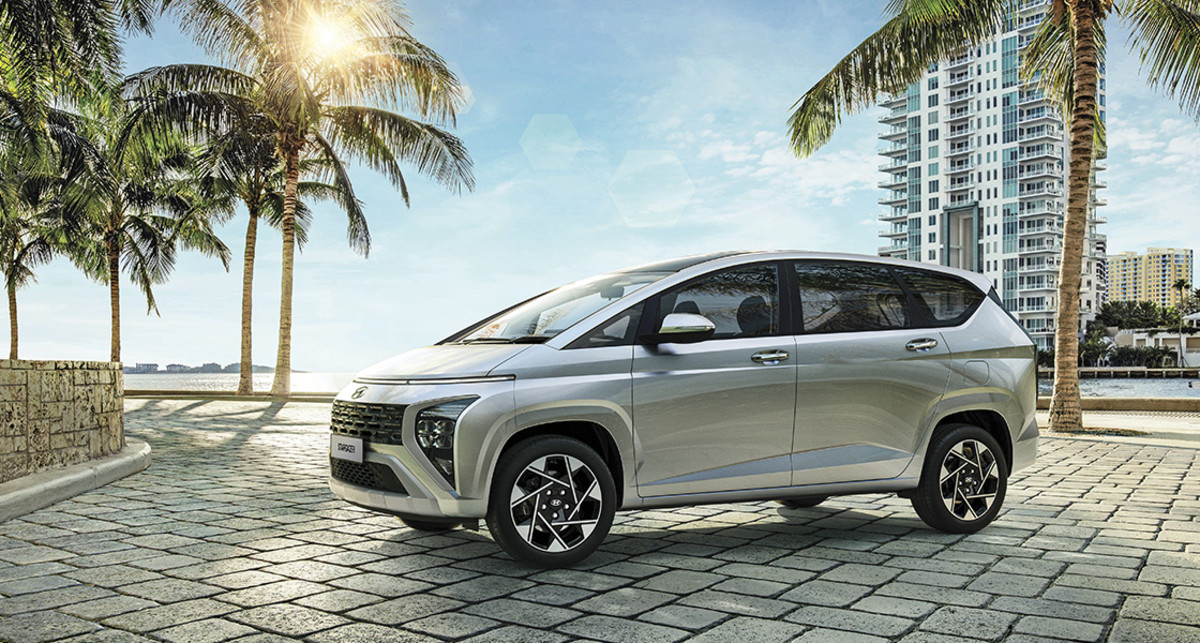 Hyundai Stargazer
Hyundai StargazerHyundai
Hyundai’s international models bring the design language to a wider range of body styles
That's not to say that Hyundai's design language doesn't extend past the North American market. Asian and Middle Eastern countries are treated to minivans like the Hyundai Staria and Stargazer that, while polarizing at best, remind me of a roadgoing version of the Axiom spaceship from Wall-E.
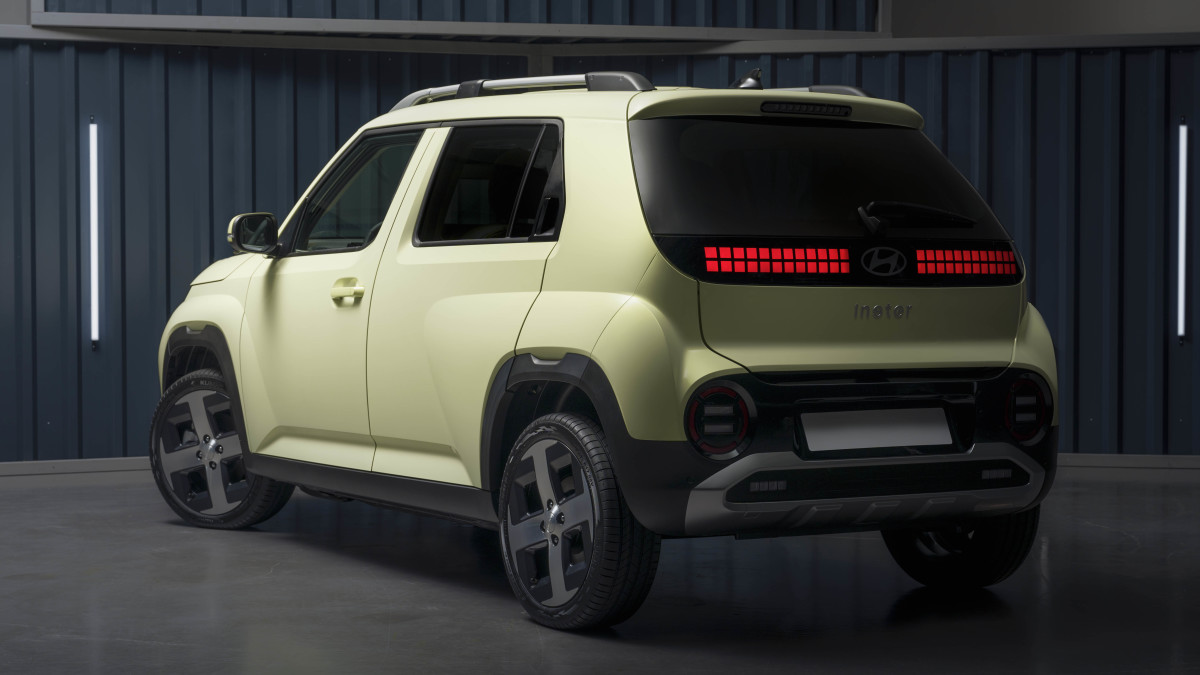 Hyundai Inster
Hyundai InsterHyundai
The UK also gets the Hyundai Inster, a cute little sub-compact that takes design cues from North American models like the pixel lights and imbues them into something that looks like a teenaged Citroen Ami.
Related: Is Hyundai's INITIUM hydrogen-powered concept an EV killer?
Looking to the future
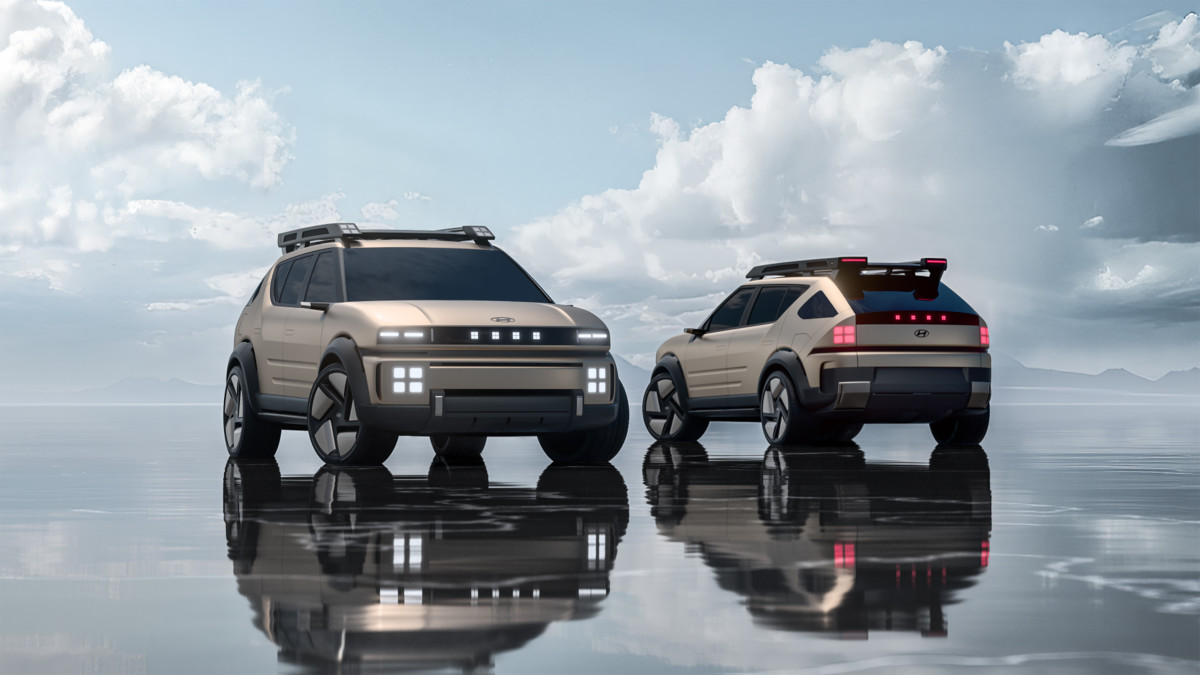 Hyundai INITIUM Hydrogen FCEV
Hyundai INITIUM Hydrogen FCEV
Hyundai is now looking to expand its industry "disruption" with new alternative fuels as well. Their newly revealed INITIUM hydrogen FCEV concept showed us their latest advances in hydrogen technology along with their upcoming "Art of Steel" design language.
The hydrogen-powered SUV concept strongly resembles a bigger N Vision 74, with similar lights and hatchback-like shape. Whether Hyundai can make hydrogen a viable fuel alternative for the public remains to be seen, although Toyota tried and mostly failed to do so with their Mirai.
Final thoughts
Hyundai is doing all the right things to stand out, from granting two top designers complete creative freedom to forgoing contemporary design trends in favor of a distinctive approach.
Embracing retro-futuristic elements while still making their cars look like cars is seemingly a rare talent in modern automotive design. To use an overrated adage, it's a breath of fresh air and a much-needed boost to the often-overlooked Korean automotive industry. Now that the N Vision 74 is slated to go into production in limited numbers, we're excited to see what else the masterminds at Hyundai cook up.

 1 week ago
4
1 week ago
4

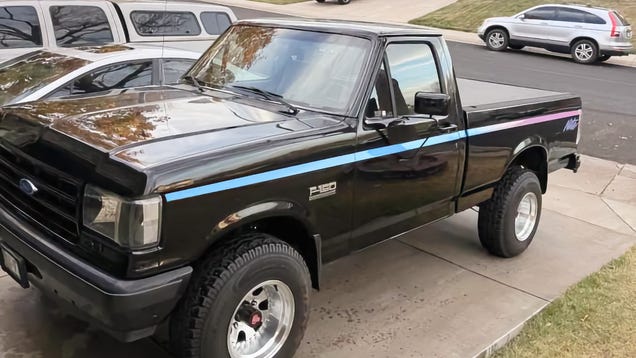
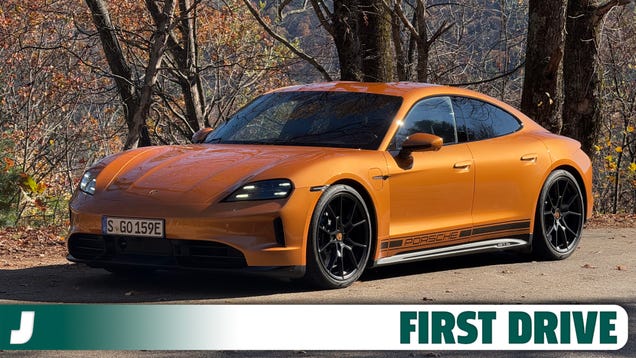





 English (US) ·
English (US) ·